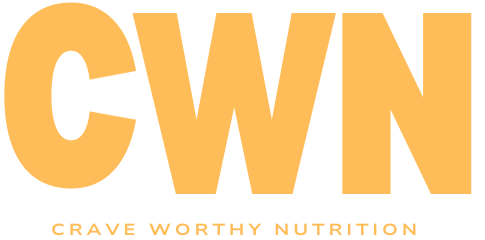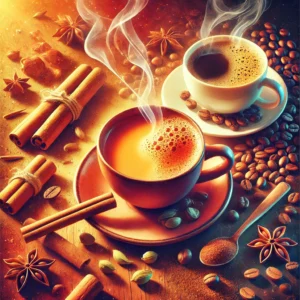
When it comes to cooking and baking, one of the most common questions that home cooks ask is “how many tablespoons in a cup?”
Whether you’re a seasoned chef or a kitchen novice, understanding kitchen conversions can be a game-changer.
Accurate measurements are key to ensuring that your recipes turn out perfectly every time.
So grab your measuring tools, and let’s get started!
Why Accurate Measurements Matter
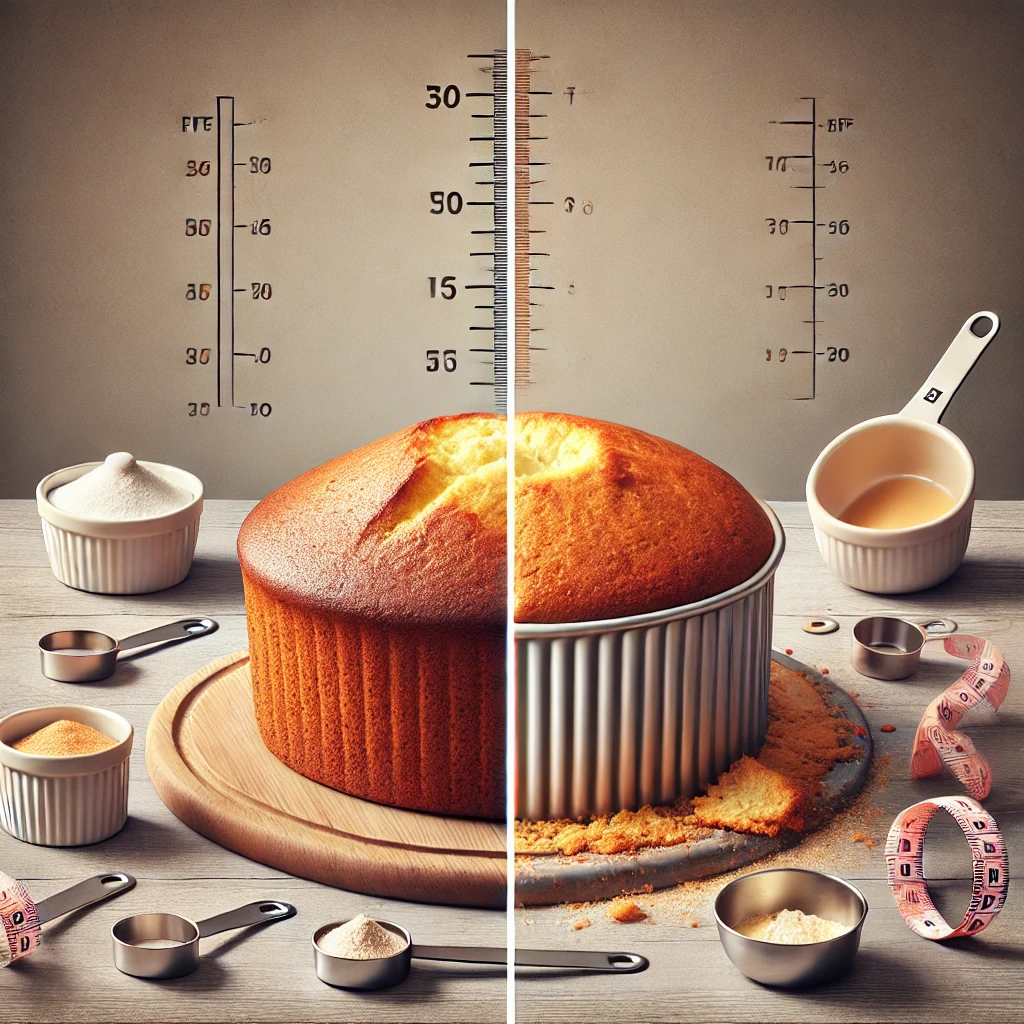
Cooking is often described as an art, while baking is a science.
In both cases, however, precision can make a big difference in the outcome of your dish.
Imagine making a cake and wondering why it didn’t rise properly, or preparing a sauce only to find that it’s too runny.
These mishaps often boil down to one simple issue: inaccurate measurements.
Kitchen conversions can sometimes feel confusing, especially when dealing with cups, tablespoons, teaspoons, and ounces.
Each recipe may call for different units, and if you don’t know how to convert them correctly, you might end up with a culinary disaster.
One of the most frequently asked questions in this regard is “how many tablespoons in a cup?”
It’s a simple query but one that has a clear and definite answer.
However, it opens the door to a broader discussion about conversions that every cook should know.
Understanding Kitchen Measurements
How Many Tablespoons in a Cup?

The straightforward answer to “How many tablespoons are in a cup? is simple: there are 16 tablespoons in a standard U.S. cup.
This conversion is essential for anyone who is cooking or baking because many recipes require you to convert measurements based on what tools you have available.
For example, you might have a recipe that calls for ½ cup of an ingredient, but you only have a tablespoon handy.
Knowing that there are 16 tablespoons in a cup means that half a cup would be equivalent to 8 tablespoons.
This small piece of knowledge can save you time and frustration in the kitchen.
Why the U.S. Cup is Standard (But Not Universal)
Before we dive into more conversions, it’s worth noting that the U.S. cup measurement is standard in most American recipes, but this isn’t true worldwide.
In countries like Australia, New Zealand, and Canada, a “cup” can differ slightly.
For instance, the U.S. cup is 240 milliliters, while in Australia, a cup is 250 milliliters.
This discrepancy may not seem like much, but for delicate recipes, such as cakes or pastries, even small differences in measurement can lead to significant changes in texture or flavor.
Always double-check the origin of a recipe to ensure you are using the correct measurements.
Common Conversions Related to How Many Tablespoons in a Cup
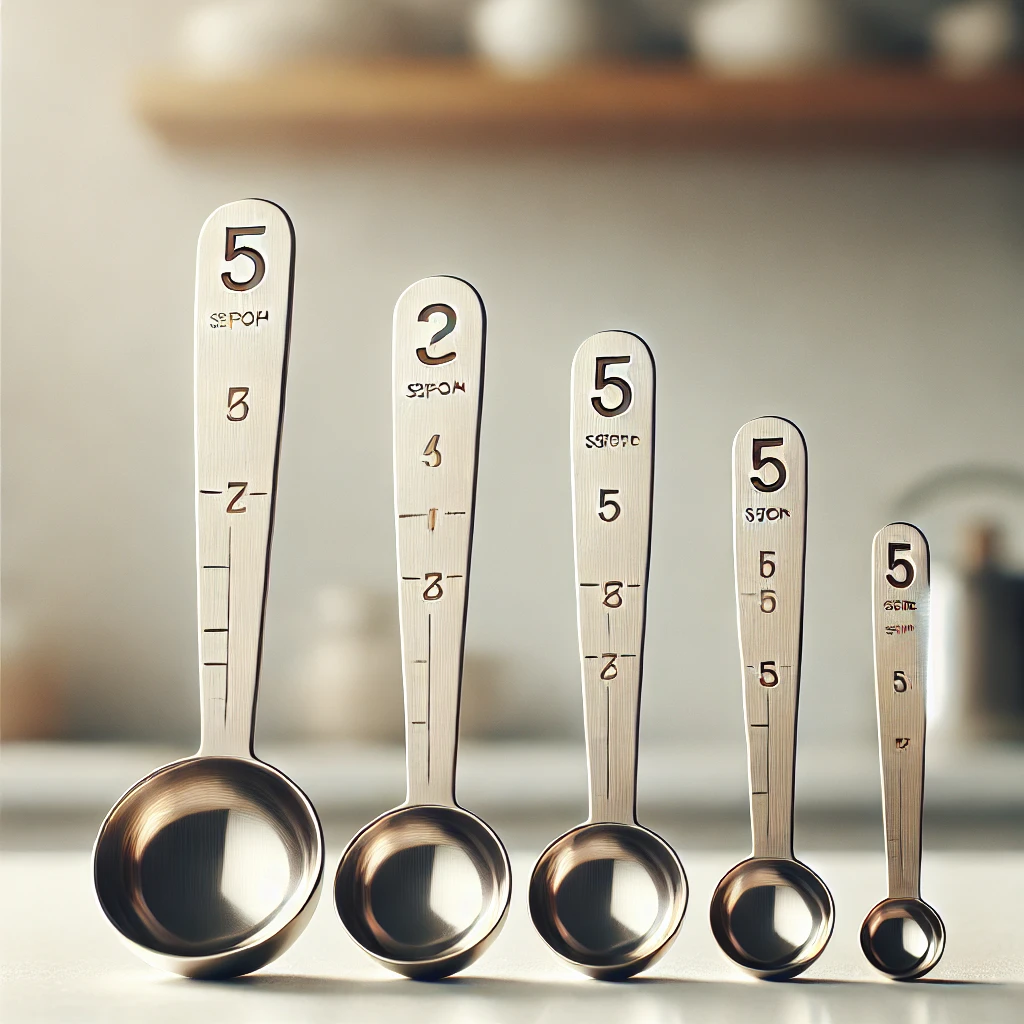
Once you know that there are 16 tablespoons in a cup, you open up a whole new world of flexibility in the kitchen.
This simple conversion allows you to break down larger measurements into smaller ones or scale recipes with ease.
Whether you’re trying to double a recipe, halve it, or simply don’t have the right measuring tool on hand, knowing these conversions can be a lifesaver.
Let’s dive deeper into some of the most common conversions that every cook and baker should know.
We’ll cover how to convert between cups, tablespoons, teaspoons, and even smaller units like teaspoons and fractions of cups.
These conversions are particularly useful when working with complex recipes or when you need to adjust a recipe’s yield.
Breakdown of Common Cup to Tablespoon Conversions:
- 1 Cup
The standard measurement that most recipes use. We know from our earlier discussion that:- 1 cup = 16 tablespoons
This is a fundamental conversion for anyone in the kitchen and applies to both liquid and dry ingredients.
- 1 cup = 16 tablespoons
- ½ Cup
A common measurement used in baking, particularly for ingredients like butter, sugar, or flour. It’s helpful to know that:- ½ cup = 8 tablespoons
This is especially useful when a recipe calls for half a cup, and you don’t have a cup measure available.
- ½ cup = 8 tablespoons
- ⅓ Cup
Frequently seen in recipes for sauces, baked goods, or liquid ingredients. The conversion for ⅓ cup is slightly less straightforward:- ⅓ cup = 5 tablespoons + 1 teaspoon
Having this conversion on hand can help ensure that you get the exact measurement required without over- or under-estimating.
- ⅓ cup = 5 tablespoons + 1 teaspoon
- ¼ Cup
Often used for smaller portions of ingredients such as nuts, seeds, or liquids in recipes. The conversion for ¼ cup is:- ¼ cup = 4 tablespoons
This is a straightforward conversion and very handy when working with smaller batches or dividing recipes.
- ¼ cup = 4 tablespoons
- ⅛ Cup
This is less commonly used but still important for things like spices or small amounts of liquid. The conversion is:- ⅛ cup = 2 tablespoons
If you ever need to divide a recipe into very small portions, this conversion will be particularly helpful.
- ⅛ cup = 2 tablespoons
Related Smaller Conversions
While the main focus is on cups and tablespoons, knowing how to convert between tablespoons and teaspoons or ounces is also crucial for precision in the kitchen.
- 1 tablespoon = 3 teaspoons
This conversion is handy when working with spices or flavorings. - 1 tablespoon = ½ fluid ounce
This is useful when converting between volume and weight in recipes, especially for liquid ingredients.
Table of Common Cup-to-Tablespoon Conversions
Below is a detailed table summarizing the most common conversions related to how many tablespoons in a cup, and additional fractional measurements:
| Measurement | Tablespoons | Teaspoons | Fluid Ounces | Milliliters |
|---|---|---|---|---|
| 1 cup | 16 tablespoons | 48 teaspoons | 8 fluid ounces | 240 milliliters |
| ¾ cup | 12 tablespoons | 36 teaspoons | 6 fluid ounces | 180 milliliters |
| ⅔ cup | 10 tablespoons + 2 teaspoons | 32 teaspoons | 5.33 fluid ounces | ~158 milliliters |
| ½ cup | 8 tablespoons | 24 teaspoons | 4 fluid ounces | 120 milliliters |
| ⅓ cup | 5 tablespoons + 1 teaspoon | 16 teaspoons | 2.67 fluid ounces | ~79 milliliters |
| ¼ cup | 4 tablespoons | 12 teaspoons | 2 fluid ounces | 60 milliliters |
| ⅛ cup | 2 tablespoons | 6 teaspoons | 1 fluid ounce | 30 milliliters |
| 1 tablespoon | 1 tablespoon | 3 teaspoons | 0.5 fluid ounce | 15 milliliters |
| 1 teaspoon | 0.33 tablespoons | 1 teaspoon | ~0.17 fluid ounce | 5 milliliters |
How to Use This Table in the Kitchen
Whether you are following a recipe that calls for unusual or tricky measurements or simply scaling a recipe to make more or less, this table provides you with all the information you need to convert between cups, tablespoons, teaspoons, and milliliters.
For example, if you’re making a sauce and the recipe calls for ⅔ cup of olive oil, but you want to scale it down by half, you can quickly check the table to find that ⅔ cup equals 10 tablespoons + 2 teaspoons.
Half of that would be 5 tablespoons + 1 teaspoon.
This way, you ensure that the recipe remains balanced and flavorful, even when scaling.
On the other hand, if you’re using a recipe from a different country that lists measurements in milliliters, this table will help you convert from milliliters to cups, tablespoons, or teaspoons with ease.
For instance, if a recipe asks for 240 milliliters of milk, you can glance at the table to see that this is equivalent to 1 cup in U.S. measurements.
By understanding these common conversions, you’ll become more comfortable and confident in the kitchen.
Now, no matter what measurement a recipe calls for, you can rest assured that you have the knowledge to convert accurately and efficiently.
This expanded section, along with the detailed table, provides a comprehensive guide that can serve as a quick reference whenever you need to break down or scale a recipe in your culinary adventures.
You only want to make half the amount, you’ll now know that you need 1 cup, or 16 tablespoons.
Tablespoons, Teaspoons, and Other Small Measures

While knowing how many tablespoons are in a cup is essential, being familiar with smaller measurements like tablespoons, teaspoons, and their conversions can be just as important.
These units are commonly used in recipes for spices, flavorings, leavening agents like baking soda, and other ingredients that are measured in smaller quantities.
Getting these small measurements right is vital for achieving the perfect balance of flavors in your dish.
Too much or too little of an ingredient like salt or baking powder can drastically affect the outcome of a recipe. That’s why it’s crucial to understand the relationships between these small measures.
Understanding Tablespoon and Teaspoon Conversions
The most common smaller units used in cooking and baking are tablespoons (tbsp) and teaspoons (tsp).
You’ll often see them in recipes when measuring smaller ingredients like vanilla extract, spices, or oil. Here are some basic conversions to remember:
- 1 tablespoon = 3 teaspoons
- 1 teaspoon = ⅓ tablespoon
- 1 tablespoon = ½ fluid ounce
These conversions are handy when you’re trying to scale a recipe, adjust for dietary needs, or when you don’t have the exact measuring tool available.
Other Common Small Measures
In addition to tablespoons and teaspoons, you’ll occasionally come across smaller units, particularly in recipes that require precision, such as those for baking or candy making.
These might include fractions of teaspoons, drops, or pinches, which can sometimes be harder to measure without knowing the exact conversions.
For instance:
- 1 dash = about 1/8 teaspoon
- 1 pinch = about 1/16 teaspoon
- 1 drop = varies depending on the liquid, but typically between 1/64 and 1/96 teaspoon
These very small measurements are used for strong spices or flavorings, like cayenne pepper or essential oils, where even a tiny bit can have a big impact on the flavor or texture of your dish.
Practical Examples of Tablespoon and Teaspoon Use
- Spices
When following a recipe that calls for cinnamon or paprika, you’ll often see measurements like 1 teaspoon or ½ teaspoon. For a delicate balance of flavor, these small measurements are critical. - Baking Ingredients
Leavening agents like baking powder or baking soda are almost always measured in teaspoons. Using too much can cause baked goods to rise too quickly and then collapse, while using too little can result in a dense, flat product. - Oils and Extracts
Liquid flavorings, like vanilla extract or almond extract, are commonly measured in teaspoons. Similarly, small quantities of olive oil or other cooking oils are often measured in tablespoons or teaspoons for precise amounts.
Detailed Table of Small Measurements
Below is a detailed table that breaks down how tablespoons and teaspoons relate to other small measures:
| Measurement | Tablespoons (tbsp) | Teaspoons (tsp) | Fluid Ounces (fl oz) | Milliliters (ml) | Equivalent Notes |
|---|---|---|---|---|---|
| 1 tablespoon | 1 tbsp | 3 tsp | 0.5 fl oz | 15 ml | Standard U.S. tablespoon |
| ½ tablespoon | 0.5 tbsp | 1.5 tsp | 0.25 fl oz | 7.5 ml | Half a tablespoon |
| 1 teaspoon | 0.33 tbsp | 1 tsp | 0.17 fl oz | 5 ml | Standard U.S. teaspoon |
| ½ teaspoon | 0.167 tbsp | 0.5 tsp | 0.083 fl oz | 2.5 ml | Half a teaspoon |
| ¼ teaspoon | 0.083 tbsp | 0.25 tsp | 0.042 fl oz | 1.25 ml | Quarter teaspoon |
| ⅛ teaspoon | 0.042 tbsp | 0.125 tsp | 0.021 fl oz | 0.625 ml | Eighth of a teaspoon |
| 1 dash | 0.042 tbsp | ~1/8 tsp | ~0.021 fl oz | ~0.62 ml | Common for spices |
| 1 pinch | 0.021 tbsp | ~1/16 tsp | ~0.010 fl oz | ~0.31 ml | Pinch of salt/spices |
| 1 drop | 0.003 tbsp | ~1/64 tsp | ~0.0015 fl oz | ~0.08 ml | Typically for liquids |
How to Use These Conversions
These small measure conversions are incredibly useful in many everyday kitchen situations.
For instance, if a recipe requires 2 teaspoons of some vanilla extract but you only have a tablespoon measure, you can use 2/3 of a tablespoon instead (since 1 tablespoon equals 3 teaspoons).
Similarly, if a recipe asks for ¼ teaspoon of cayenne pepper and you only have a tablespoon measure, you can calculate that ¼ teaspoon is equivalent to 1/12 of a tablespoon.
For practicality, you may want to use a teaspoon for these smaller quantities to ensure precision.
Tips for Measuring Small Quantities
- Leveling Off
When measuring dry ingredients like baking powder or flour, use the flat edge of a knife or spatula to level off the top of your spoon or cup. This ensures that you’re getting an accurate measure. - Use Measuring Spoons for Liquids and Dry Ingredients
While measuring spoons are primarily used for small quantities of dry ingredients, they work just as well for liquids like extracts and oils. Just be sure to pour liquids carefully to avoid spillage. - Invest in a Set of Measuring Spoons
A good set of measuring spoons is an essential tool for any kitchen. Look for a set that includes 1 tablespoon, 1 teaspoon, ½ teaspoon, and ¼ teaspoon. Some sets even include 1/8 teaspoon and smaller measures, which are useful for precise cooking. - Digital Scale for Accuracy
For ingredients like salt, yeast, or spices, where even small differences can affect the recipe, consider using a digital kitchen scale that measures in grams or milliliters. This can be especially helpful for very small amounts, like 1/8 teaspoon or less. - Pour Slowly for Liquids
When measuring small amounts of liquids (like a teaspoon of vanilla extract), it’s easy to over-pour. Pour slowly and carefully to avoid spilling too much and altering the balance of your recipe.
Master the Small Measurements
Mastering small measurements like tablespoons, teaspoons, and other tiny quantities is crucial for anyone who spends time in the kitchen.
These small differences can make or break a recipe, especially in baking or when using potent ingredients like spices and extracts.
With the detailed table provided, you can confidently convert between tablespoons, teaspoons, fluid ounces, and milliliters, ensuring that you have the right amount of each ingredient every time.
Whether you’re baking a cake, whipping up a sauce, or seasoning a dish, knowing these small conversions will help you create delicious, well-balanced meals with ease.
Liquid vs. Dry Ingredients: Are Conversions the Same?

One of the most common questions in the kitchen revolves around whether the same measurements apply to both liquid and dry ingredients.
The simple answer is that while the measurement units (like tablespoons or cups) remain the same, the way you measure liquid and dry ingredients can vary, and this can significantly affect the accuracy of your recipe.
For instance, both liquids and dry ingredients can be measured in cups, but you wouldn’t use a liquid measuring cup to measure flour, just as you wouldn’t use a dry measuring cup for water or oil.
The reason for this lies in the properties of liquids and dry ingredients, and the tools designed to measure each one.
Let’s break down the key differences and how to ensure you’re measuring accurately.
Measuring Liquid Ingredients
Liquids like water, milk, oil, and broth require measuring tools specifically designed to handle their fluid nature.
Liquid measuring cups typically have spouts and marked lines, making it easy to pour the liquid and measure it accurately without spilling.
When measuring liquids, it’s essential to place the measuring cup on a flat surface and bend down to eye level to ensure you’re reading the measurement line correctly.
For small amounts of liquids, like teaspoons and tablespoons, use measuring spoons designed for liquids.
Measuring Dry Ingredients
Dry ingredients, such as flour, sugar, oats, or cocoa powder, are typically measured using dry measuring cups.
These cups are meant to be filled to the top and then leveled off with a flat edge to ensure accurate measurement.
Unlike liquids, dry ingredients can be packed down or aerated, leading to discrepancies in measurement if not handled properly.
For example, scooping flour with a measuring cup directly from the bag can pack the flour and result in more flour than the recipe calls for, affecting the outcome of your dish.
Instead, lightly spoon the flour into the cup and level it off with a knife or spatula for accuracy.
Why These Conversions Matter
The conversion between liquid and dry measurements can sometimes be confusing because liquids are measured by volume and dry ingredients by weight.
This distinction is important when a recipe requires precise amounts, as using the wrong measuring technique can lead to inconsistent results.
For instance, 1 cup of water weighs 240 grams, but 1 cup of flour weighs only around 120 grams.
Even though they both occupy the same volume (1 cup), their weights are drastically different, highlighting the need to measure dry and liquid ingredients using the appropriate tools.
Detailed Table of Liquid vs. Dry Ingredient Measurements
The following table illustrates some of the common liquid and dry ingredients and how they compare when measured by volume (cups) and weight (grams or ounces).
This table can help you understand the difference between the two and guide you in your recipes.
| Measurement | Liquid Ingredients (Volume) | Dry Ingredients (Weight) | Equivalent (Grams) |
|---|---|---|---|
| 1 cup of water | 1 cup = 8 fluid ounces | N/A (measured by volume, not weight) | 240 grams |
| 1 cup of milk | 1 cup = 8 fluid ounces | N/A | 240 grams |
| 1 cup of oil | 1 cup = 8 fluid ounces | N/A | 220 grams (varies by oil type) |
| 1 cup of flour | N/A | 1 cup = 4.25 ounces | ~120 grams |
| 1 cup of sugar | N/A | 1 cup = 7 ounces | ~200 grams |
| 1 cup of brown sugar | N/A | 1 cup = 6.7 ounces (packed) | ~195 grams |
| 1 cup of butter | N/A | 1 cup = 8 ounces | ~227 grams |
| 1 tablespoon of water | 1 tablespoon = 0.5 fluid ounces | N/A | 15 grams |
| 1 tablespoon of flour | N/A | 1 tablespoon = 0.3 ounces | ~8 grams |
| 1 tablespoon of sugar | N/A | 1 tablespoon = 0.4 ounces | ~12 grams |
How to Measure Dry Ingredients Accurately
When measuring dry ingredients, such as flour or sugar, it’s important to use dry measuring cups or spoons. Here’s how to measure accurately:
- Spoon and Level Method
Lightly spoon the ingredient into your dry measuring cup and then use a straight edge (like the back of a knife) to level it off. This method prevents you from packing down the ingredient, which could result in more than the recipe calls for. - Sifting for Accuracy
For ingredients like flour or powdered sugar, sifting them before measuring ensures that you get an accurate amount, as these ingredients can settle and pack over time. - Weighing Dry Ingredients
For the ultimate accuracy, especially in baking, using a kitchen scale to weigh dry ingredients is the best practice. This eliminates the inconsistencies that can arise from how ingredients are packed or scooped.
How to Measure Liquid Ingredients Accurately
For liquid ingredients, use a liquid measuring cup and follow these steps:
- Flat Surface
Place the liquid measuring cup on a flat surface and pour the liquid in until it reaches the desired line. Bending down to eye level with the measuring lines ensures accuracy and prevents over- or under-measuring. - Measuring Small Quantities
For smaller amounts of liquids, like teaspoons or tablespoons, use measuring spoons. Be sure to fill the spoon fully to its edge for the most accurate measurement. - Handling Sticky Liquids
For ingredients like honey, syrup, or peanut butter, which are thick and sticky, lightly oiling your measuring cup or spoon will make it easier to pour the ingredient out without leaving too much residue behind.
The Difference in Weight: Why It’s Crucial
Even though liquid and dry ingredients can be measured using the same volume units (cups, tablespoons, etc.), their weight can vary significantly. For example, 1 cup of water and 1 cup of flour are not equal in weight—this is critical to understand, particularly in baking, where precision is paramount.
- Liquids
Liquids like water, milk, or oil have consistent volume-to-weight ratios, meaning that 1 cup of liquid will typically weigh about the same (approximately 240 grams for water and milk). - Dry Ingredients
Dry ingredients, on the other hand, vary in weight based on their density. - For instance, 1 cup of flour is much lighter than 1 cup of sugar.
- Flour tends to aerate, meaning it contains air pockets that make it lighter, while sugar is denser and packs more tightly into a cup.
By understanding these differences and using the appropriate measuring tools, you can ensure that your recipes turn out as intended, without the risk of using too much or too little of an ingredient.
Metric vs. Imperial Conversions
The world uses two primary systems for measuring ingredients: the metric system and the imperial system.
In the U.S., the imperial system is most commonly used, which is why we’re focusing on how many tablespoons in a cup as part of this guide.
In the metric system, however, ingredients are often measured in milliliters, grams, and liters.
While this guide primarily focuses on the imperial system, it’s helpful to know the basic conversions between the two systems.
- 1 cup = 240 milliliters
- 1 tablespoon = 15 milliliters
If you’re using an international recipe, this information will help you convert between systems.
Remember, precision matters, especially when dealing with recipes that require exact measurements like bread or soufflés.
Kitchen Tools for Accurate Measuring
While it’s great to know how many tablespoons in a cup, having the right tools is equally important.
Here are some kitchen gadgets that will make measuring a breeze:
Measuring Cups and Spoons
Investing in a good set of measuring cups and spoons is essential for every kitchen.
Measuring cups are available for both dry and liquid ingredients, and having both types will help ensure accuracy in your recipes.
Measuring spoons, which include tablespoons and teaspoons, are perfect for smaller quantities like spices or extracts.
Kitchen Scales
A kitchen scale is an excellent tool for precise measurements, especially when working with dry ingredients.
It can help eliminate the guesswork involved in measuring items like flour, which can vary in volume depending on how it’s packed.
Digital Thermometers and Timers
Though not directly related to how many tablespoons in a cup, using digital thermometers and timers can greatly improve the accuracy of your cooking, especially for more complex recipes.
Practical Uses of Knowing How Many Tablespoons in a Cup

Now that you know how many tablespoons in a cup, let’s look at some practical ways to use this knowledge in the kitchen:
Scaling Recipes
As mentioned earlier, knowing how to convert between cups and tablespoons is essential for scaling recipes up or down.
If you’re hosting a large dinner party and need to double a recipe, knowing that there are 16 tablespoons in a cup helps you easily adjust your ingredients without second-guessing.
Baking with Precision
Baking is one of the areas where precision is crucial. Whether you’re making cookies, cakes, or bread, having the right measurements will ensure that your baked goods come out perfect every time.
For instance, when a recipe calls for 1 cup of butter, you now know that it’s equivalent to 16 tablespoons, which can be particularly useful if you’re working with stick butter that is pre-measured in tablespoons.
Cooking on the Fly
Sometimes, you’re in the middle of a recipe and realize you’re missing a specific measuring cup or spoon.
Knowing how many tablespoons in a cup allows you to adapt on the fly and keep your cooking process smooth and efficient.
Conclusion: Mastering Kitchen Conversions
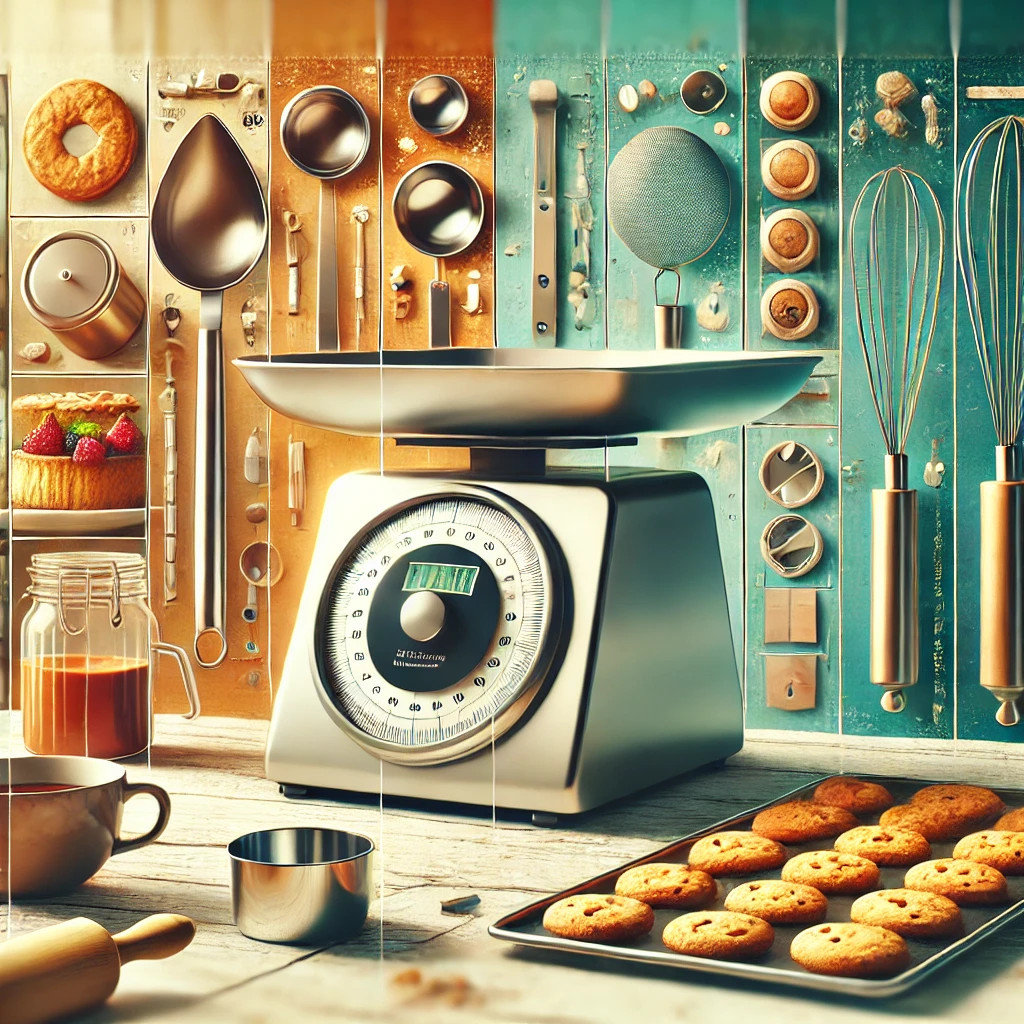
With the information from this ultimate kitchen conversion guide, you’ll never have to second-guess your measurements again.
So the next time you ask, “how many tablespoons in a cup?” you’ll not only know the answer but also have the skills to make every recipe a culinary triumph!
Related Articles:
Why Every Home Cook Needs a Kitchen Scale
Kitchen Conversions: Breaking Down ‘How Many Teaspoons in a Tablespoon’
As an Amazon Associate, I earn from qualifying purchases.
